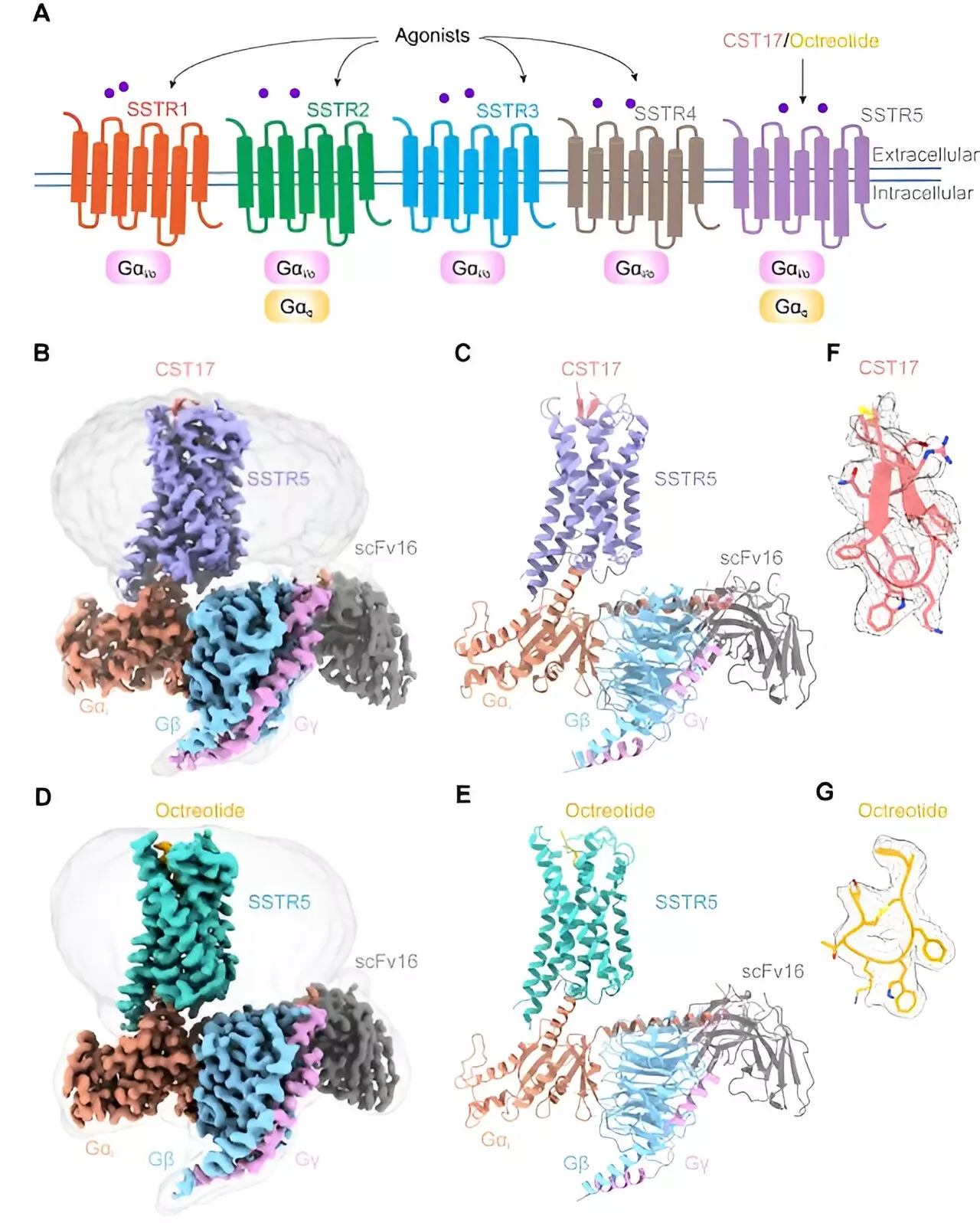Somatostatin receptors (SSTRs) are G protein-coupled receptors (GPCRs) that play a significant role in hormone secretion regulation and tumor growth inhibition. Among the five subtypes, SSTR5 is highly expressed in the pituitary gland, controlling the release of key hormones like adrenocorticotropic hormone, prolactin, and growth hormone. This makes SSTR5 a promising target for treating endocrine disorders and hormone-related tumors.
A recent study published in PNAS by a team led by Eric H. Xu and Zhao Lihua from the Shanghai Institute of Materia Medica (SIMM) utilized cryo-electron microscopy to reveal the three-dimensional structures of SSTR5 in complex with two ligands – cortistatin-17 (CST17) and octreotide. The resolution of these structures provided insights into the molecular mechanisms of SSTR5 activation by these ligands.
The cryo-EM structures of SSTR5 bound to CST17 and octreotide showed a rearrangement in the “hydrophobic lock” formed by transmembrane helices TM3 and TM6 upon agonist binding. This conformational change led to an outward movement of TM6, facilitating G protein coupling and activation for downstream signaling. The study also highlighted the distinct recognition modes of extracellular loops ECL2 and ECL3 for CST17 and octreotide, elucidating their agonist selectivity.
The significance of this study lies in its contribution to understanding the activation mechanisms of SSTR5 and its specific recognition of neuropeptide and drug agonists. This paves the way for the development of novel SSTR5 modulators with enhanced selectivity and reduced off-target effects. These advancements offer promising therapeutic opportunities for conditions such as acromegaly, pituitary adenomas, neuroendocrine tumors, and hormonal imbalances.


Leave a Reply